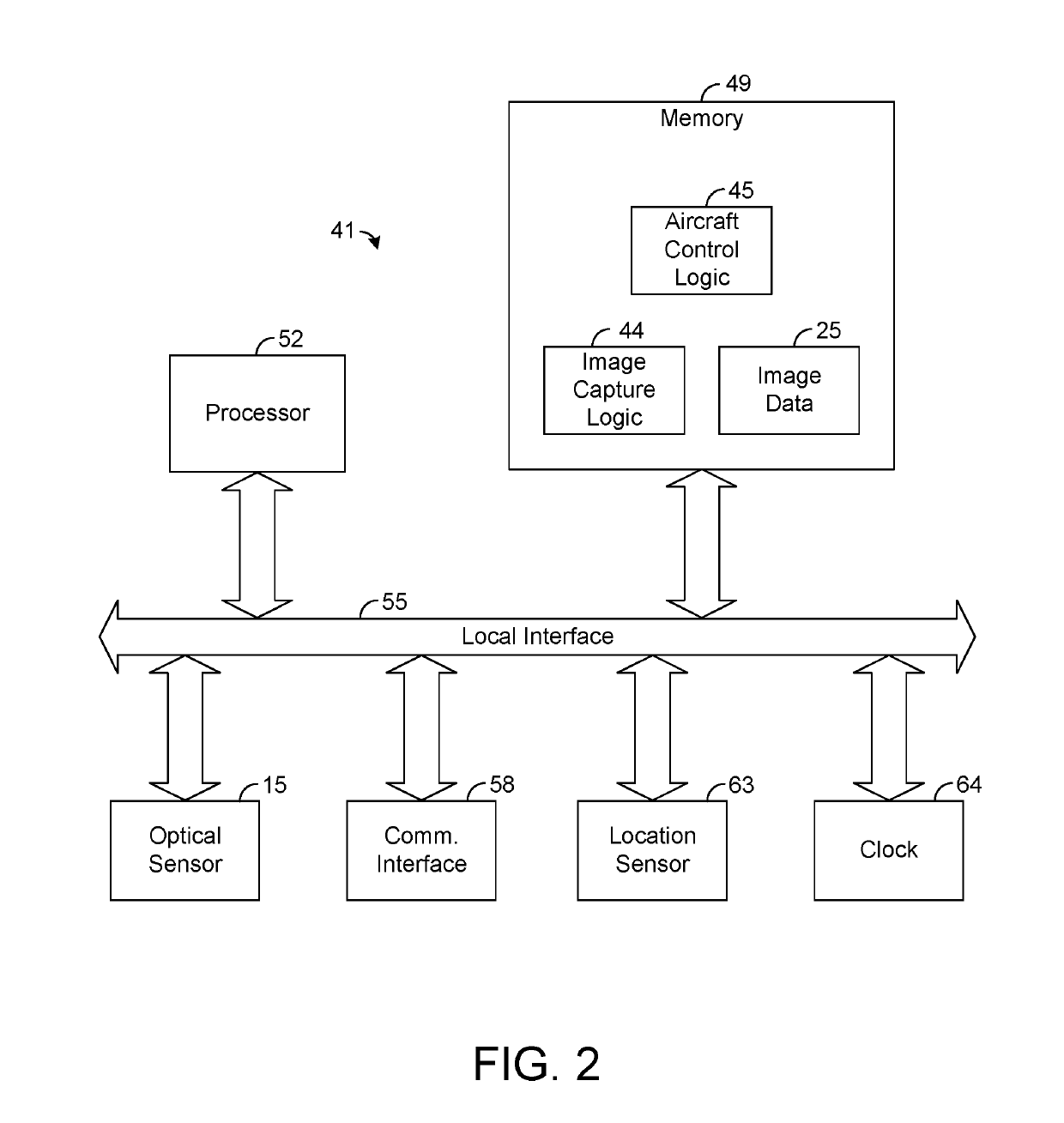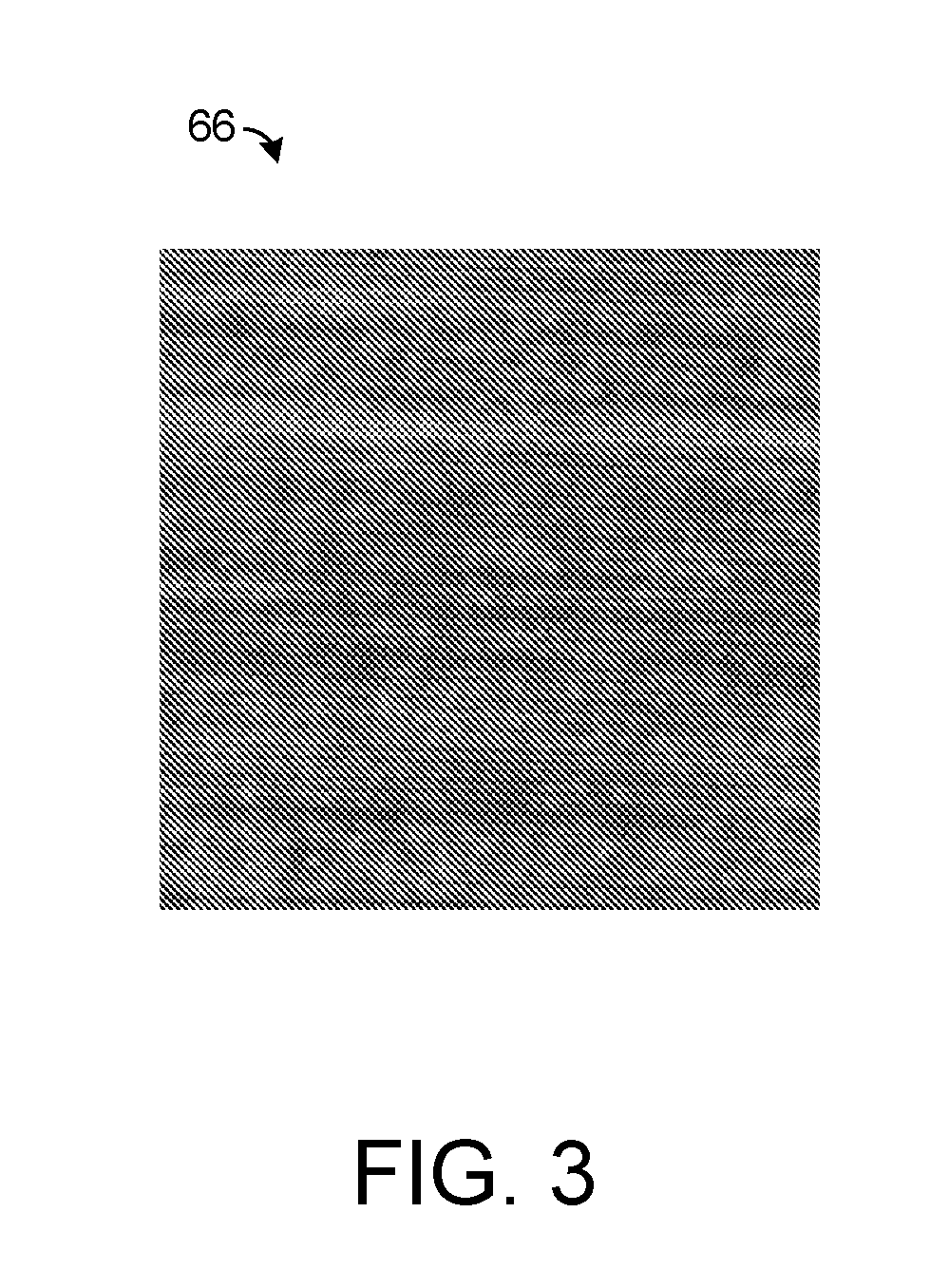Systems and methods for mapping emerged plants
a technology of emerged plants and mapping systems, applied in the field of systems and methods for mapping emerged plants, can solve the problems of no longer accurately indicating the layout, plant death shortly after germination, and farmer making at least some inefficient crop management decisions
- Summary
- Abstract
- Description
- Claims
- Application Information
AI Technical Summary
Benefits of technology
Problems solved by technology
Method used
Image
Examples
Embodiment Construction
[0015]The present disclosure generally pertains to systems and methods for mapping emerged plants. A system in accordance with one embodiment of the present disclosure comprises an optical sensor that configured to capture at least one image of a field of emerged plants. As an example, the optical sensor may be coupled to an unmanned aerial vehicle (UAV) that is controlled to fly over a field as the optical sensor captures images of the field. In some cases, multiple images of the field are combined (e.g., stitched) in order to form a composite image that can be analyzed to determine the number and locations of emerged plants in the field. In this regard, an image processing apparatus receives image data from the optical sensor and detects areas of vegetation within an image of the field. Based on detected patterns of vegetation within the image, the image processing apparatus identifies emerged plants and creates at least one map indicating the location of each emerged plant identi...
PUM
 Login to View More
Login to View More Abstract
Description
Claims
Application Information
 Login to View More
Login to View More - R&D
- Intellectual Property
- Life Sciences
- Materials
- Tech Scout
- Unparalleled Data Quality
- Higher Quality Content
- 60% Fewer Hallucinations
Browse by: Latest US Patents, China's latest patents, Technical Efficacy Thesaurus, Application Domain, Technology Topic, Popular Technical Reports.
© 2025 PatSnap. All rights reserved.Legal|Privacy policy|Modern Slavery Act Transparency Statement|Sitemap|About US| Contact US: help@patsnap.com



